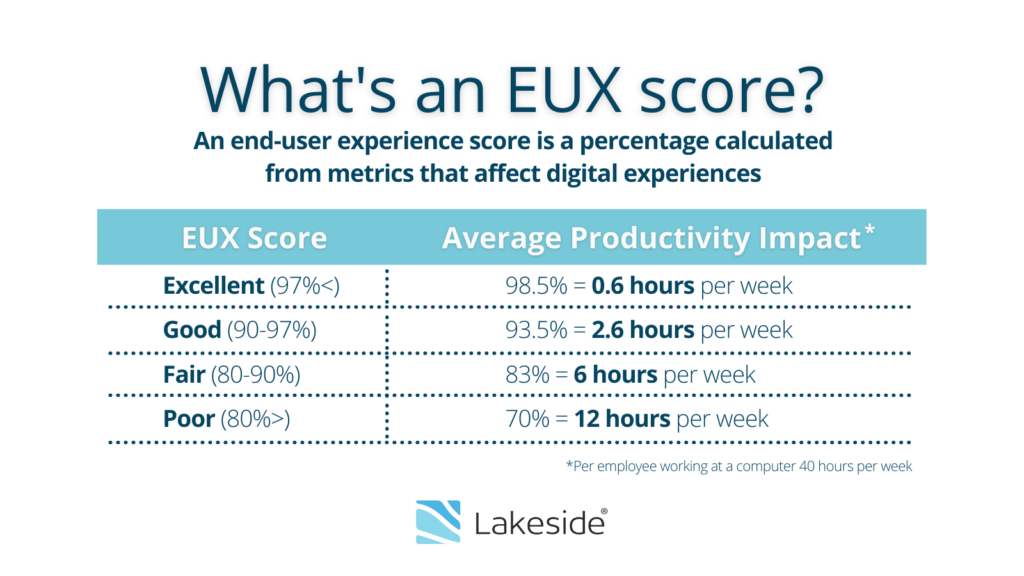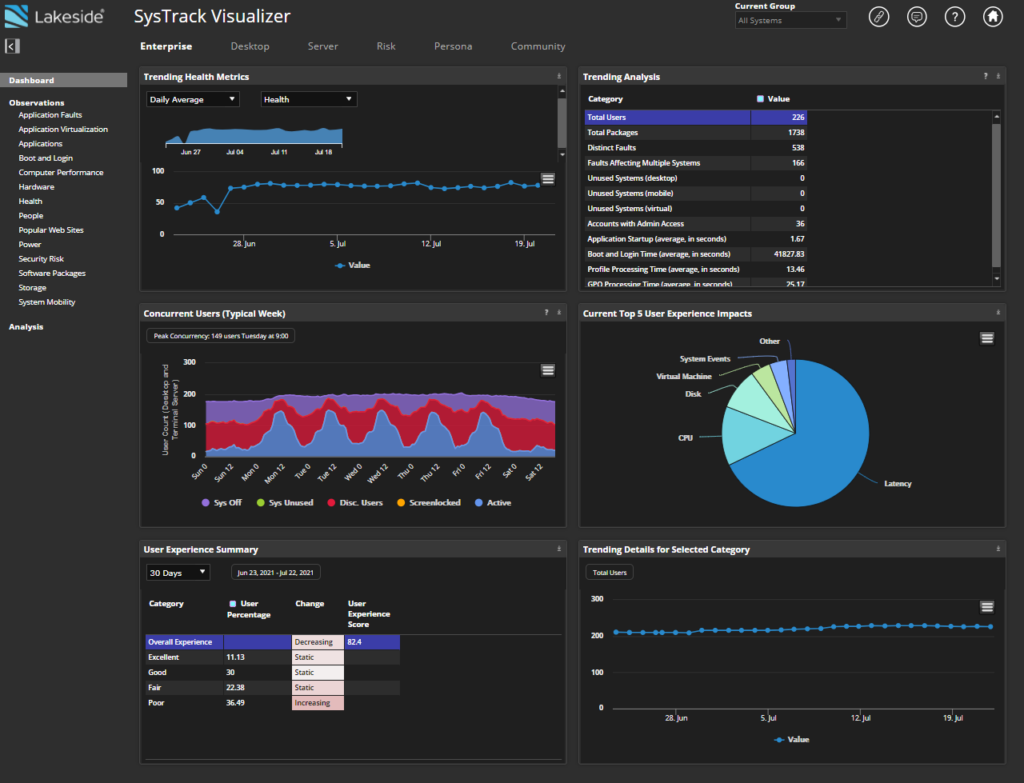
As companies create new, high-level roles to improve employee productivity and engagement, they’ll need to do more than just come up with a digital experience roadmap. By defining and measuring key performance indicators and ITSM metrics focused on DEX, digital experience leaders can ensure their strategies are on track.
More companies are creating new positions such as chief experience officer (CXO) and digital experience director to help improve employee productivity and engagement. Critical to these roles is to develop, maintain, and execute a digital experience roadmap ensuring that the workforce has a positive interaction with workplace technology.
According to the Forrester Employee Experience Index, 30% of an employee’s overall experience is represented by technology. That means enhancing digital employee experience (DEX) can significantly impact employee engagement and productivity.
Better DEX also contributes to lower IT costs and the company’s ability to meet its business goals. As per Lakeside Software’s digital employee experience report, based on commissioned research from ESI ThoughtLab, 41% of CEOs interviewed believe that enhanced digital employee experience can contribute to lower operational costs and higher productivity.
By defining and measuring key performance indicators (KPIs) and IT service management (ITSM) metrics focused on DEX, digital experience leaders can ensure their strategies are on track.
KPIs vs. Metrics
So why are KPIs important? Organizations establish and measure KPIs to better understand if they are heading in the right direction. That’s why tracking revenue growth and profit margins, for example, are crucial to any business.
KPIs are the most important metrics an organization needs to measure to evaluate its strategy and performance. Not all metrics to measure performance, however, are KPIs. A significant difference between KPIs and metrics is that:
- Metrics track the status of business processes.
- KPIs track the effectiveness of your business initiatives.
IT Costs: KPI to Measure IT Efficiency and Digital Experience
When it comes to IT service management, certain IT metrics clearly impact business KPIs. Consider, for example, IT costs as a KPI that is impacted by the following operational efficiency metrics, among others:
Support desk ticket volume
Support desk tickets are onerous for organizations. Lakeside Software’s research indicates that the internal cost per IT ticket might range from $15.01 to $30, according to 61% of surveyed IT leaders. By reducing ticket volume, organizations can increase IT efficiency and streamline their costs.
Mean time to resolution (MTTR)
This metric indicates how much time IT takes to resolve an incident. Quicker resolution minimizes downtime and improves satisfaction because employees can go back to work. If the technician cannot solve an issue and has to escalate it to a higher-level support agent, the user will have to wait even longer for a resolution, and the IT costs will increase due to the involvement of L2/L3 agents.
These two IT metrics — service desk ticket volume and MTTR — are telling not only about IT efficiency but also about the quality of the end-user experience. If employees are submitting a growing number of help desk tickets, they are facing difficulties that are impacting their digital experience and productivity. If users are waiting longer times for resolution, their satisfaction and productivity are also compromised.
Digital Experience Score as a Critical KPI
A growing number of organizations are complementing their service level agreements (SLAs) with experience level agreements (XLAs) to ensure they are meeting their business goals. As per Lakeside’s recent report on digital employee experience, 46% of the surveyed IT staff indicated that the transition from SLAs to XLAs is a high or very high priority for 2021.
XLAs place the user and their digital experience — rather than operational efficiency and application performance — in the center of the IT service delivery. As Gartner predicts, “By 2025, 70% of digital business initiatives will require I&O leaders to report on the business metrics from digital experience, up from less than 15% today.”
Lakeside Quantifies Digital Employee Experience
In determining and benchmarking their KPIs, companies need to identify which performance metrics are more aligned with their business goals and objectives. Lakeside can help organizations to make employee digital experience a critical part of their strategy.
By offering predictive diagnostics, self-healing capabilities, automated root cause analysis (RCA), and proactive remediation, our Digital Experience Cloud, powered by SysTrack, empowers IT teams to reduce ticket volume, MTTR, and downtime; improving employee satisfaction with workplace technology; and streamline the service desk.
Being able to quantify the digital experience with a numerical value is a key feature of our digital experience management (DEM) platform. Lakeside’s health score combines the productivity impact of different performance indicators, including:
- Device and application performance
- Internet connectivity and web browsing
- Employee productivity and user sentiment

Lakeside quantifies user experience into a number between 0-100, which can be viewed at the user level, the group level (for example, only remote workers), and the enterprise level. This score can also be visualized as a historical trend, enabling IT to track changes over time. Companies can use this user experience score as a key performance indicator to:
- Provide a comprehensive picture of the user experience
- Measure progress over time, demonstrating the impact of improvement efforts
- Identify new opportunities for improvement

Subscribe to the Lakeside Newsletter
Receive platform tips, release updates, news and more



